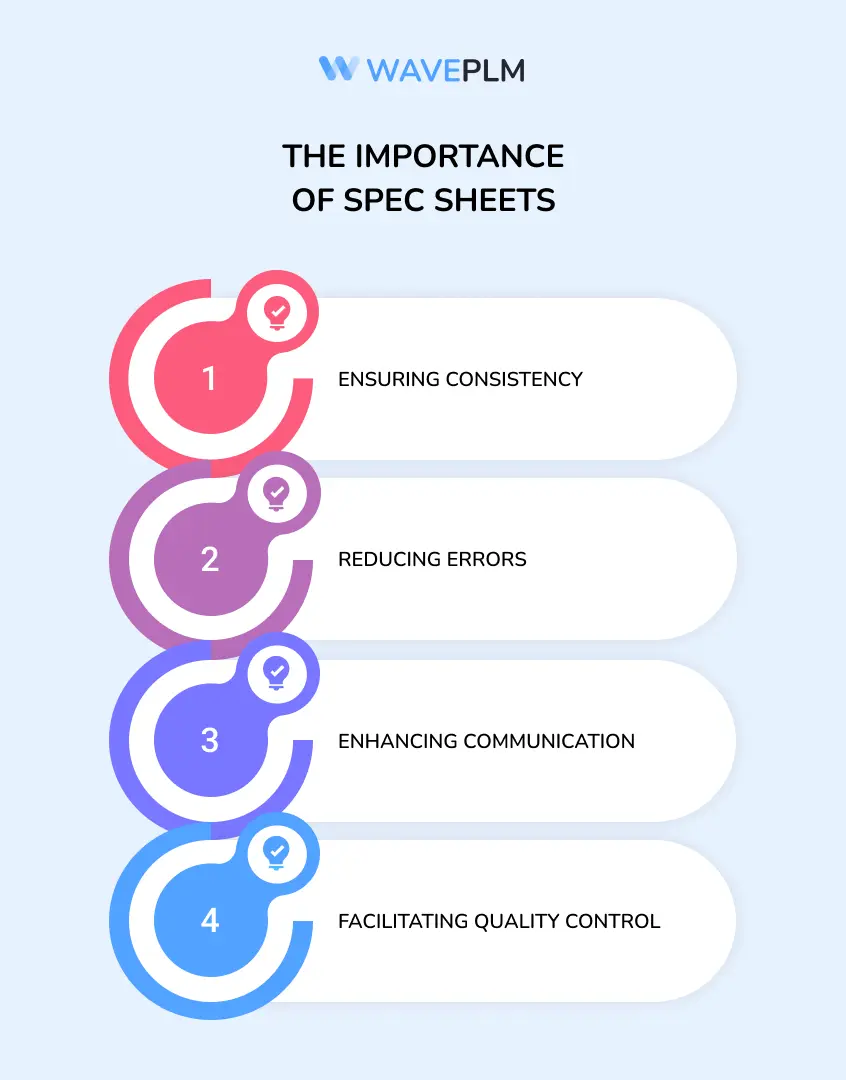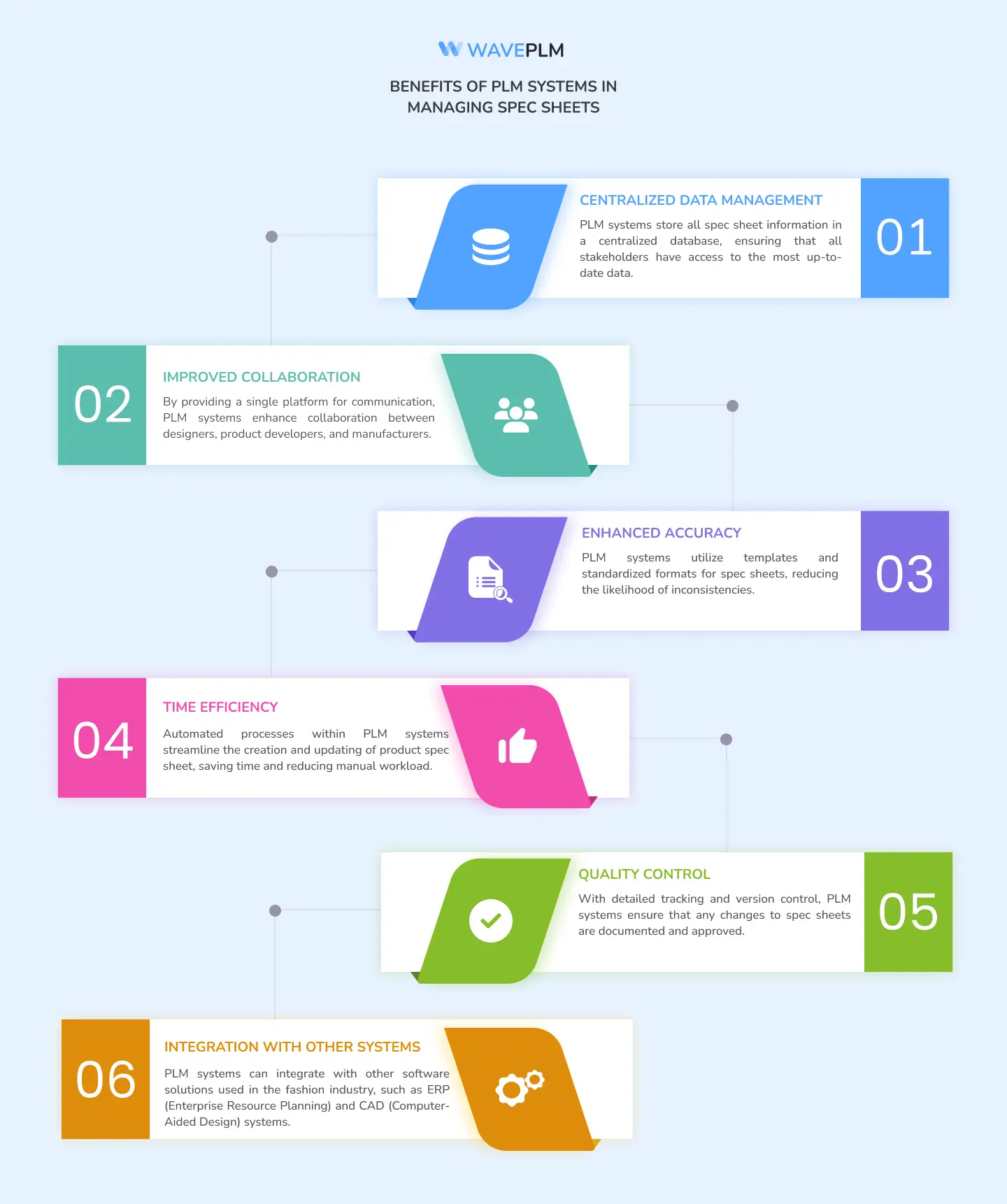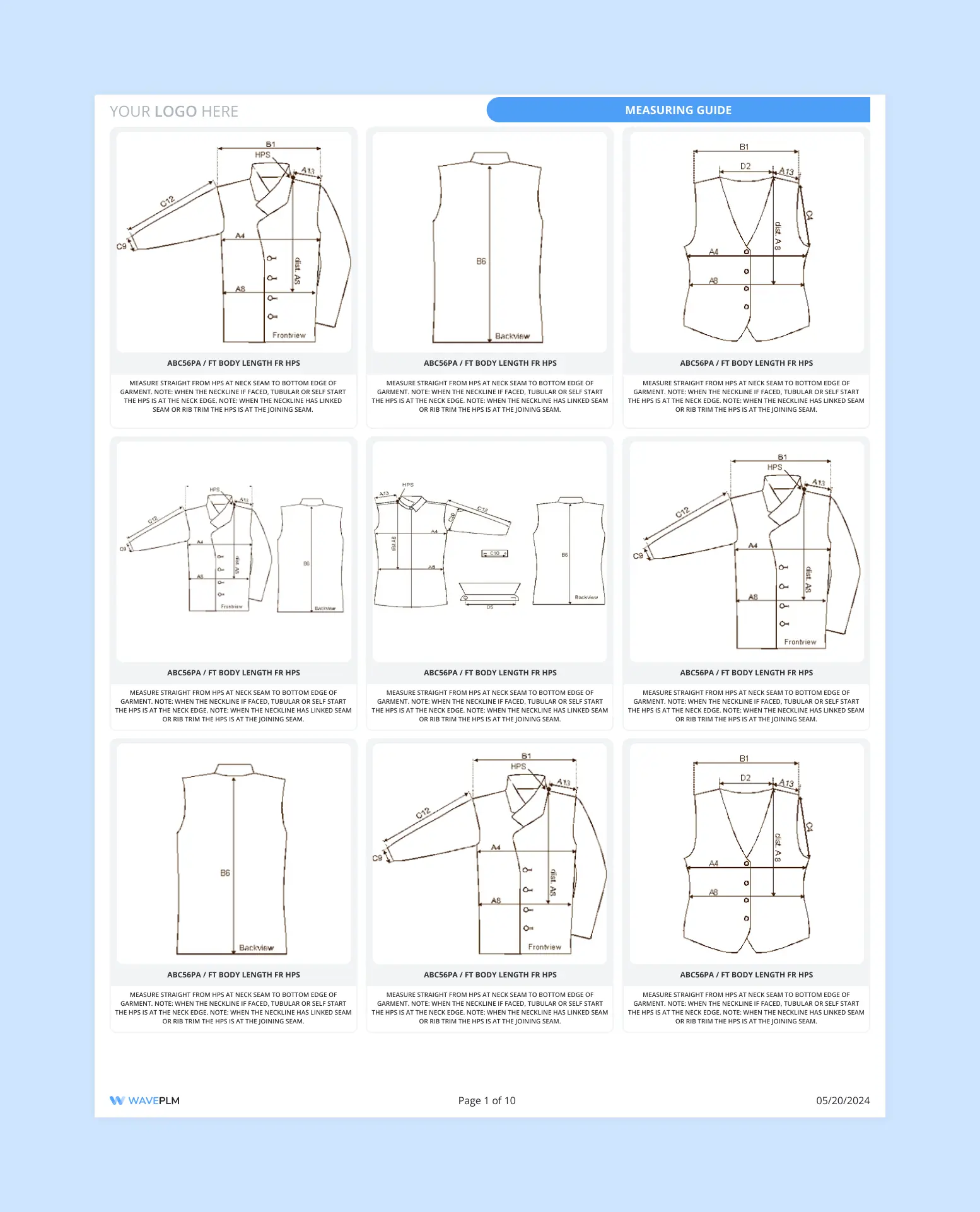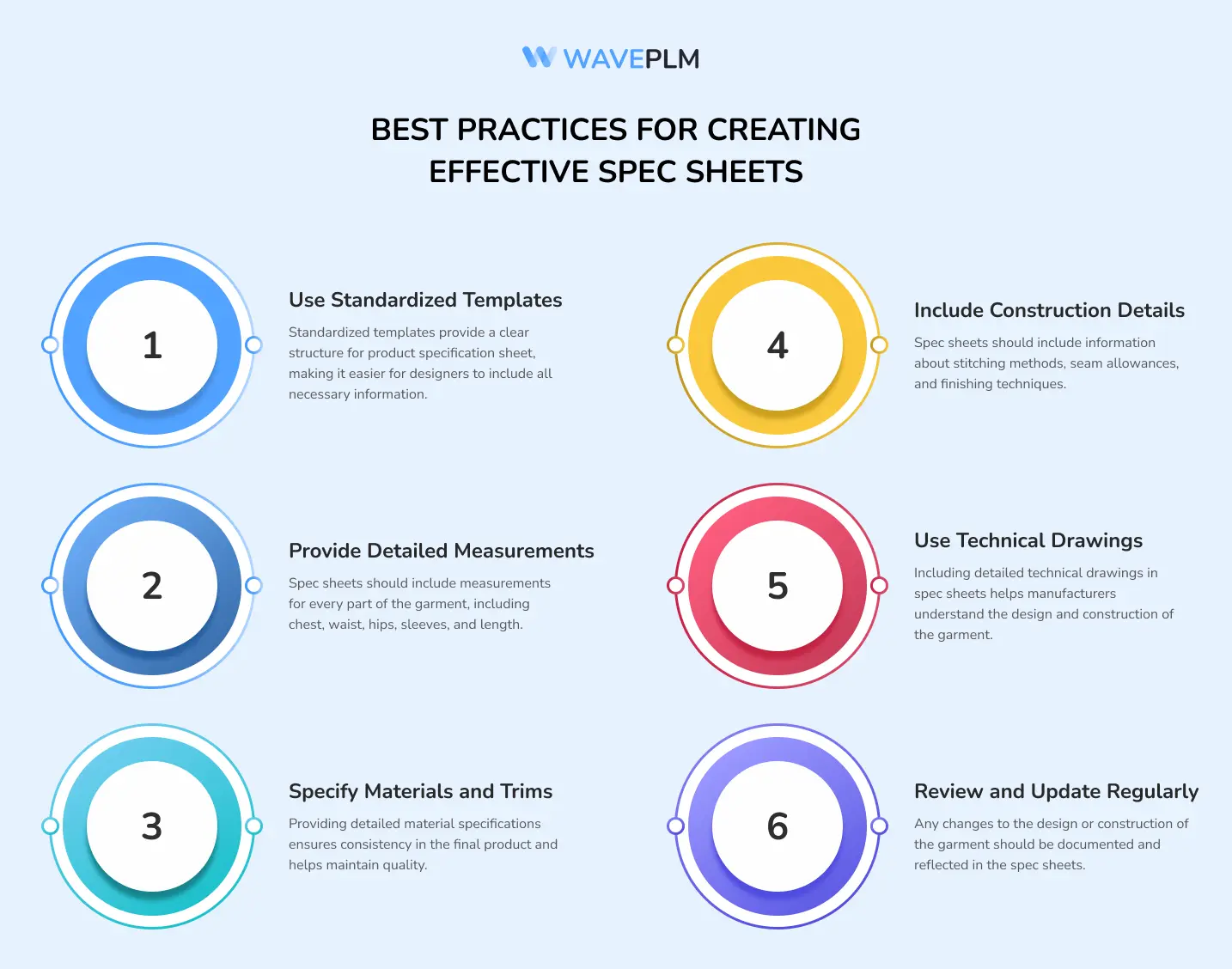
In the fast-paced and highly competitive world of fashion, every detail counts. From the initial concept to the final product, the journey of creating a garment is intricate and multifaceted. One of the most critical components in this process is the specification sheet, commonly known as a product spec sheet. The best part is that this document ensures manufacturers understand the exact requirements for producing a garment. However, as the fashion industry evolves, integrating Product Lifecycle Management (PLM) systems into the workflow has revolutionized how spec sheets are utilized and managed. In this comprehensive guide, we will explore the intricacies of spec sheets, their importance, and the transformative impact of PLM systems on the fashion industry’s workflow.
Understanding Spec Sheets in Fashion Style
A product specification sheet, or spec sheet, is a detailed document that outlines the technical aspects of a garment, making it the perfect blueprint for manufacturers. It serves as a blueprint, providing precise instructions to manufacturers about how a garment should be made.
Components of a Spec Sheet
Spec sheets are comprehensive documents that include various sections, each detailing specific aspects of the garment. Key components typically found in a spec sheet include:
- Measurements: Detailed dimensions of each part of the garment, including chest, waist, hips, sleeves, and length. Accurate measurements are crucial for ensuring a proper fit.
- Materials: Specifications of fabrics, trims, and other materials used. This section details the type, weight, color, and supplier of each material, ensuring consistency in the final product.
- Construction Details: Instructions on how the garment should be assembled. This includes stitching methods, seam allowances, and finishing techniques. Clear construction details help maintain quality and durability.
- Colorways: Information on color options and dyeing instructions. This section ensures that the garment is produced in the correct colors and shades, maintaining brand consistency.
- Labels and Tags: Placement and content of labels and care tags. Proper labeling is essential for legal compliance and customer information.
- Technical Drawings: Detailed technical sketches or CAD drawings of the garment. These visuals provide a clear representation of the design and construction. For example, a technical drawing can illustrate the exact placement of seams and pockets, ensuring that the final product matches the design specifications. These visuals not only ensure accuracy but also help in maintaining the garment’s style as envisioned by the designer.
Woman Garment Spec Sheet
A garment spec sheet, or measurement table, is an essential component of a tech pack. It allows designers to communicate precise technical specifications and requirements to manufacturers, guiding them on how to accurately produce the garment.
Whether designing for a man or a woman, the garment spec sheet ensures that every detail is meticulously planned and executed.
A garment specification (spec) sheet, or measurement table, is a technical document detailing all the construction elements of a garment. Resembling a technical diagram or sketch, it includes all necessary measurements. Designers use spec sheets to convey design concepts clearly to manufacturers.

Garment spec sheet
The Importance of a Spec Sheet
The spec sheet is the backbone of garment production, serving multiple critical functions in the fashion industry:
- Ensuring Consistency
Spec sheets, or product specification sheets, ensure that every garment produced meets the designer’s standards. The best part is that they provide precise measurements and detailed construction instructions, helping maintain consistency across all production runs. This consistency is vital for building brand reputation and customer trust.
- Reducing Errors
Clear and detailed specs reduce the risk of production errors. When manufacturers have precise instructions, the likelihood of miscommunication and mistakes decreases significantly. This reduction in errors saves time, resources, and money.
- Enhancing Communication
Spec sheets improve communication between designers, product developers, and manufacturers. By providing a common reference point, spec sheets ensure that all parties involved understand and can explain the garment’s requirements and expectations. This improved communication streamlines the production process and minimizes misunderstandings.
- Facilitating Quality Control
Spec sheets play a crucial role in quality control. By detailing every aspect of the garment, spec sheets provide a benchmark for evaluating the final product. Quality control teams can use spec sheets to check for accuracy in measurements, materials, and construction, ensuring that the garment meets the desired standards.

The Role of PLM Systems in Fashion
As the fashion industry becomes more complex and fast-paced, managing the lifecycle of a product from initial concept to final production requires the perfect blend of advanced tools and technologies. Product Lifecycle Management (PLM) systems have emerged as essential solutions for managing this complexity. PLM systems are software solutions designed to manage the entire lifecycle of a product, from initial concept through to manufacturing and retail. In the context of fashion, PLM systems streamline the workflow by centralizing all product-related information, including spec sheets. PLM systems can also manage product specification sheets for both products and services.
Benefits of PLM Systems in Managing Spec Sheets
- Centralized Data Management: PLM systems store all spec sheet information in a centralized database, ensuring that all stakeholders have access to the most up-to-date data. This centralized data management reduces the risk of errors and miscommunication, as everyone is working with the same information.
- Improved Collaboration: By providing a single platform for communication, PLM systems enhance collaboration between designers, product developers, and manufacturers. Changes to spec sheets can be made in real-time, with notifications sent to all relevant parties. This improved collaboration ensures that everyone is on the same page, reducing delays and misunderstandings.
- Enhanced Accuracy: PLM systems utilize templates and standardized formats for spec sheets, reducing the likelihood of inconsistencies. This standardization ensures that every spec sheet is clear and comprehensive, facilitating accurate production and quality control while maintaining the garment’s style.
- Time Efficiency: Automated processes within PLM systems streamline the creation and updating of product spec sheet, saving time and reducing manual workload. This efficiency is crucial in the fast-paced fashion industry where time-to-market is critical. By automating routine tasks, PLM systems allow designers and developers to focus on more creative and strategic activities.
- Quality Control: With detailed tracking and version control, PLM systems ensure that any changes to spec sheets are documented and approved. This oversight helps maintain high standards of quality throughout the production process. By providing a clear audit trail, PLM systems enhance accountability and traceability.
- Integration with Other Systems: PLM systems can integrate with other software solutions used in the fashion industry, such as ERP (Enterprise Resource Planning) and CAD (Computer-Aided Design) systems. This integration ensures seamless data flow and consistency across all stages of the product lifecycle.

Case Study: PLM Systems Transforming Fashion Workflow
Consider a leading fashion brand that integrated a PLM system into its operations. Prior to implementation, the brand faced challenges with miscommunication and delays due to inconsistent spec sheets. Designers and manufacturers often worked with outdated or incomplete information, leading to production errors and rework. Post-implementation, the brand reported a 30% reduction in production errors and a 20% faster time-to-market. The centralized PLM system enabled seamless collaboration, accurate spec sheet, and efficient workflow management. The brand’s new workflow also allowed for better representation of diverse fashion needs, whether designing for a man or a woman. Product specification sheet played a crucial role in improving workflow and reducing errors by providing detailed technical information and ensuring consistent communication.
Streamlining Design and Development Time
Before integrating the PLM system, the brand’s design and development process was fragmented and time-consuming. Designers used multiple tools to create and share spec sheets, leading to inconsistencies and delays. With the PLM system, designers can now create and update spec sheets within a single platform. This integration has streamlined the design process, allowing designers to focus on creativity and innovation.
Enhancing Communication and Collaboration
The PLM system has significantly improved communication and collaboration across the organization. Designers, product developers, and manufacturers can now access and update spec sheets in real-time. Any changes made to the spec sheets are instantly visible to all relevant parties, reducing the risk of miscommunication and ensuring that everyone is working with the latest information.
Improving Quality Control
Quality control has also benefited from the PLM system. The system’s version control and audit trail features ensure that any changes to spec sheets are documented and approved. Quality control teams can use the spec sheets to check for accuracy in measurements, materials, and construction, ensuring that the final product meets the desired standards.
Best Practices for Creating Effective Spec Sheets
Creating effective spec sheets is essential for ensuring successful garment production, making them the perfect tool for designers and manufacturers alike. Here are some best practices for creating detailed and accurate spec sheets:
1. Use Standardized Templates
Using standardized templates for spec sheets ensures consistency and accuracy. Standardized templates provide a clear structure for product specification sheet, making it easier for designers to include all necessary information. They also facilitate communication and collaboration by providing a common reference point for all stakeholders. Standardized templates not only ensure accuracy but also help in maintaining the garment’s style as envisioned by the designer.
2. Provide Detailed Measurements
Accurate and detailed measurements are crucial for ensuring a proper fit. Spec sheets should include measurements for every part of the garment, including chest, waist, hips, sleeves, and length. Providing detailed measurements reduces the risk of production errors and ensures that the final product meets the desired fit.
Whether designing for a man or a woman, providing detailed measurements ensures that the final product meets the desired fit.

3. Specify Materials and Trims
Spec sheets should include detailed information about the materials and trims used in the garment. This includes the type, weight, color, and supplier of each material. Providing detailed material specifications ensures consistency in the final product and helps maintain quality.
4. Include Construction Details
Clear and detailed construction instructions are essential for maintaining quality and durability. Spec sheets should include information about stitching methods, seam allowances, and finishing techniques. Providing detailed construction instructions helps manufacturers produce garments that meet the desired standards.
5. Use Perfect Technical Drawings
Technical drawings or CAD (Computer-Aided Design) sketches provide a visual representation of the garment. Including detailed technical drawings in spec sheets helps manufacturers understand the design and construction of the garment. This visual representation reduces the risk of miscommunication and ensures accurate production.
6. Review and Update Regularly
Users should review and update spec sheets regularly to ensure accuracy and completeness. They should document and reflect any changes to the design or construction of the garment in the spec sheets. Regular review and updates ensure that all stakeholders are working with the latest information.

The Future of Spec Sheets and PLM Systems
As the fashion industry continues to evolve, product specification sheet and PLM systems will play an increasingly important role in managing the complexity of garment production. Emerging technologies such as artificial intelligence (AI), machine learning (ML), and the Internet of Things (IoT) are set to transform how spec sheets are created, managed, and utilized.
Artificial Intelligence and Machine Learning
AI and ML technologies have the potential to revolutionize the creation and management of spec sheets. AI algorithms can analyze large volumes of data to identify patterns and trends, helping designers create more accurate and detailed spec sheets. ML models can also be used to predict potential production issues and recommend solutions, reducing the risk of errors and improving efficiency.
The Internet of Things
The IoT transforms the fashion industry by enabling real-time monitoring and tracking of garment production. IoT sensors can be integrated into garments and production equipment to collect data on various parameters such as temperature, humidity, and production speed. This data can be used to monitor the production process and ensure that garments are produced according to the spec sheets. The IoT also enables real-time feedback, allowing designers and manufacturers to make adjustments and improvements as needed.
Digital Twins
The concept of digital twins, which involves creating a virtual replica of a physical product, is gaining traction in the fashion industry. Digital twins can be used to simulate and test garment designs before production, ensuring that the final product meets the desired specifications. By integrating digital twins with PLM systems, designers can create more accurate and detailed product spec sheet, reducing the risk of errors and improving efficiency.
Conclusion
In the ever-evolving fashion industry, the importance of detailed and accurate spec sheets cannot be overstated. As brands strive for efficiency and consistency, integrating PLM systems into their workflow becomes essential. These systems not only enhance the management of spec sheets but also improve overall collaboration, accuracy, and efficiency. By embracing PLM technology, fashion brands can streamline their processes, reduce errors, and ultimately deliver high-quality products to market faster.
Embracing PLM systems is not just about keeping up with technological advancements; it’s about transforming the workflow to meet the demands of today’s fashion industry. By leveraging these systems, brands can ensure that their product spec sheet is not just documents, but powerful tools driving their success.
By focusing on the integration of PLM systems, fashion brands can revolutionize their approach to product specification sheet and production workflows, ensuring consistency, quality, and efficiency in every garment produced. As the fashion industry continues to evolve, spec sheets and PLM systems will play an increasingly important role in managing the complexity of garment production, driving innovation, and ensuring success in a competitive market.
For example, Wave PLM during onboarding creates a pool of autogenerated reports for each client, including spec sheets, tech packs and BOL, which you can download or share by clicking one button.




